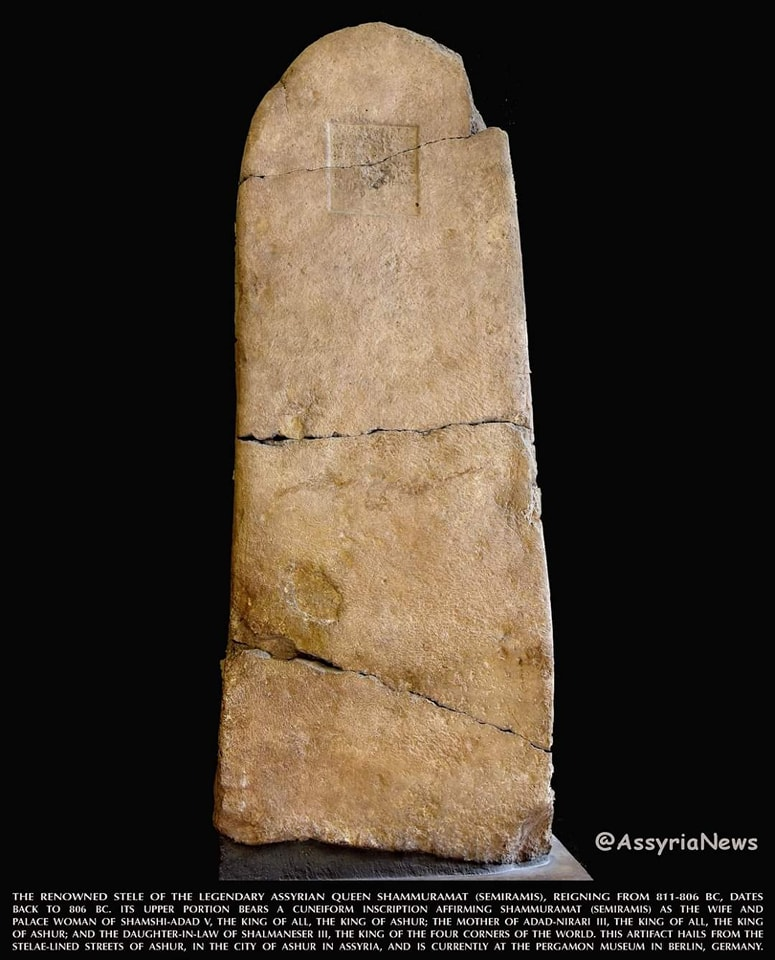Shamuramat (Semiramis)

The famous monument to the legendary Assyrian queen Shamuramat (Semiramis), who ruled from 811 to 806 BC, dates back to 806 BC.
Shammuramat (also Shamu-Ramat) was an Assyrian queen, wife of Shamshi-Adad V (824-810 BC) and mother of Adad-nirari III. (810-782 BC). It is believed that she was a daughter of the Babylonian king Marduk-Zeker-Shumi I. As a Babylonian princess, she had greater influence on Assyrian politics during her husband's lifetime. After his death, she remained for several years alone dominating the Assyrian Empire and defending it militarily, until her young son, the heir to the throne, became mature enough for his mission.
However, historians disagree as to whether Shammuramat actually performed the regency or co-rule alongside her son, at a time and in an empire where women in leadership were unthinkable, or whether she exercised influence over the young king merely as his mother. Numerous inscriptions prove that she was an exceptionally strong and lively woman.
It is also controversial what is the relationship between her and the legendary Queen Semiramis. Shamoramat in Greek translates to Semiramis and is not least because she is often considered the historical person behind the myth.
Its upper part bears a cuneiform inscription confirming that Shammuramat (Semiramis) was the wife and woman of the palace of Shamshi-Adad V, King of All, King of Assyria; Mother of Adad-nirari III, King of All, King of Assyria; And the wife of the son of Shalmaneser III, king of the four corners of the world. This artifact hails from the obelisk-lined streets of Assur, in the city of Assur in Assyria, and is currently housed in the Pergamon Museum in Berlin, Germany.
Source: websites

